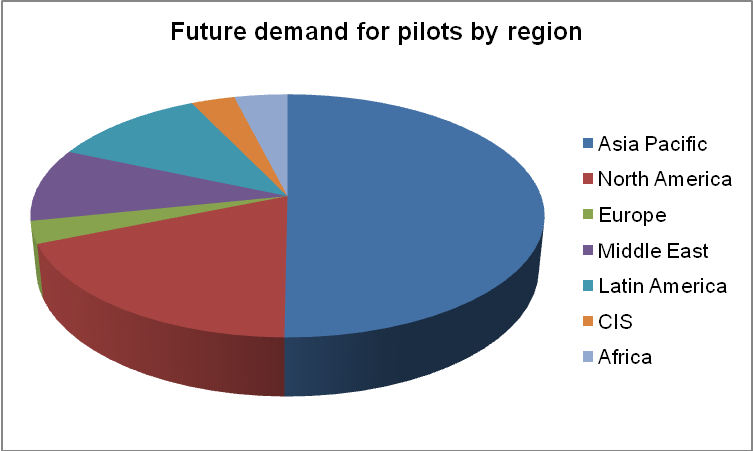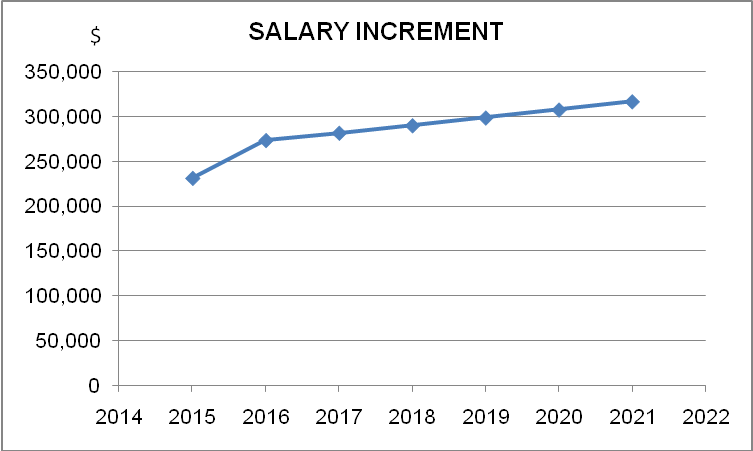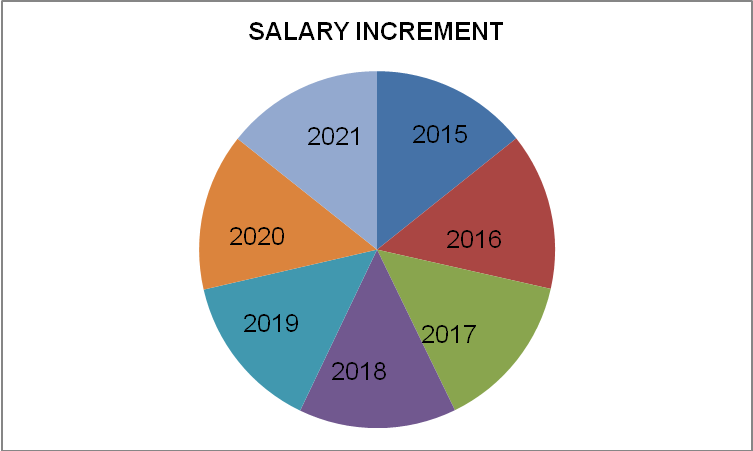Introduction
A careful assessment of the current pilot’s profession establishes that most of the offered training satisfies the requirements of safety. After all, deadly accidents are comparatively uncommon in all sectors of aviation (Čokorilo, De Luca & Dell’Acqua 2014). Nevertheless, judging by the recent airplane and business aviation fatalities, it is evident that something is amiss in the training that pilots obtain in the course of their profession. Pilot training in contemporary times uses aging aircraft that are deafening, costly, and consumes leaded fuel. However, the future of pilots training (in the upcoming five years) will change the situation attributable to innovation, better strategies, and improved technology. Though most of the existing studies concentrate on the way pilots get trained, there is inadequate data on the anticipated transformations in training practices that will keep pilots up-to-date with the arising changes and ensure enhanced safety.
Influence of Innovation
The future of pilots training will be greatly influenced by innovation and divergent thinking, which will result in the creation of novel airplanes (such as the Airbus) that will seek to realize eco-effectiveness objectives and make sure that air travel retains its status as the safest, most eco-friendly mode of transportation. With the continued developments in the aviation industry, Airbus will make the entire sector focus on technical advancement whilst also generating resolutions that will satisfy the needs of the market, rising population and demographic report, and passengers, and value every factor of environment and novelty. Following its application for a long time and continued development, Airbus will influence operations in the sector, professionals, and all stakeholders to expect the international demands of a better-linked globe and more sustainable advancements. Airbus is looking forward to an enhanced application by professionals and other stakeholders in the aviation sector in the future for the fulfilment of the international demands of interconnectedness and sustainability in the industry. Airbus will result in enhanced pilot training programs anchored in utmost standards and frequent modernization with guaranteed data precision (Naidoo, Schaap & Vermeulen 2014).
Attributable to the influence of the Airbus and other forms of innovation, trainee pilots will benefit from the expertise of trainers and their understanding of the fleet-wide operating skills (Casner, Geven & Williams 2012). Airbus has created a competency-anchored training philosophy; concentration on the requirement will lead to increased comprehension and placing of pilots in practical situations to address actual threats and inaccuracies in daily functions. This perception will enable trainee pilots to gain knowledge both from the accomplishments and errors. Airbus and other novel aircraft that will be introduced in the future will boost piloting effectiveness developed from theory in class and practising on training devices. Such novel aircraft will facilitate the full extent of training, from fundamental and comprehensive training to programs for assessors and instructors alongside tailored services to satisfy the unique needs of airlines while underscoring possible strides to meet the future necessities.
Training For a Lifespan of Effective Piloting
Is the aviation sector currently missing a significant proficiency of pilot training that will necessitate effective handling in the future? If this is the case, which proficiency is presently lacking, and how will it be imparted in pilots to ensure a lifetime of effectiveness? After the identification of the missing skill, it will seem sensible to replace a number of extant training approaches with novel techniques rather than compelling pilots to endure the repetitive practice of manoeuvres as well as emergencies that are improbable of happening and take up precious time that could be used on more beneficial tasks.
The training of pilots in the future is likely to present tremendous surprises where they will have to react appropriately to retain control of the aircraft (Naidoo, Schaap & Vermeulen 2014). In this regard, the pilots will have to practice using simulators in the course of training. The standard outlay of initial pilot training is about $8,000. In the future, the cost of training to attain full qualification for commercial pilots is anticipated to rise to over $30,000. Though the training of pilots in the future will become easier and better, it will be more costly than the present situation. The great demand for pilots across the globe will call for increased funding by the government and other stakeholders in an effort of raising the number of trainers and training facilities.
Table 1: Future demand for pilots by region.

The Federal Aviation Agency will improve the focus of pilots on the significance of lowering the angle of attack to prevent conking out or enable exiting a stall, which will assist in the avoidance of accidents. The creation of low-cost simulators will enhance training, though the Federal Aviation Agency’s decision to bar exceptions for a required time toward the device evaluation may be a deterrent for the application of simulators. Moreover, there will be a great need for full-motion devices to satisfy new regulations demanding special training for pilots. Though simulators are well able of being programmed to replicate most of the actual operations, encompassing complete stalls where there is accessible data, the issue of trouble avoidance and recovery training will necessitate the application of both simulators and airplanes to realize the most excellent training resolution. The majority of trainers will use jets in an effort of replicating airplane flight dynamics more precisely. It is, therefore, evident that there will be numerous opportunities in the future for pilots to train and practice all through their profession. Attributable to new expertise, pilots will learn some subjects online in their free time and practice numerous tactics on low-cost simulators (Naidoo, Schaap & Vermeulen 2014).
In the future, trainers will be completely conscious of the benefit of transforming the manner in which pilots obtain recurrent training and continued efforts will result in the Federal Aviation Agency endorsing more non-traditional training approaches. With improvements in the training practices, the outcome shall be ever-improving safety, particularly with the absorption of the new cohorts of pilots in the aviation sector. Frequent training will be offered to all the pilots at least two times each year and preferably after every four months. The pilot community will be progressively persuaded that the quantity of time devoted to training must be increased (Naidoo, Schaap & Vermeulen 2014).
In the future, the training of pilots will be boosted through the inclusion of novel material in the training programs to assist in the avoidance of complacency. In this regard, the trainers will begin to pump the trainees with new insights, which will make them more knowledgeable through the improvement of the training practice. The bigger picture will be the creation of a perfect world where every pilot will become more proficient by training frequently. The future of pilots training will ensure putting passengers in an aircraft with someone who has vast knowledge. In such a perfect world, the pilots will undergo training and call for trainers who challenge them in a bid to sharpen their skills.
Frequent training and the manner in which it will be provided may hold the key to the improvement of operations for business aviation pilots in accordance with the National Business Aviation Association Training Advisory Committee, which has the task of boosting and modernizing the proficiency of pilots. This will result in the promotion of the aviation concerns of organizations making use of general airplanes for business objectives both in the US and across the globe. In the present times, training constitutes majorly of regulations and check rides devoid of enhanced opportunities for the acquisition of novel skills. Furthermore, regulations and checks do not tackle training requirements anchored in any evidence. There will be the need to reform such practices in the future and employ evidence-based training for the mitigation of risks (Naidoo, Schaap & Vermeulen 2014). The Training Advisory Committee also anticipates that future pilot training will more broadly adopt safety management systems, which will assist in the provision of insights into evidence-based practices.
Fundamental Concepts
As the environment where pilot training occurs becomes ideal in the future, their skills and outcome will equally develop (Koglbauer et al. 2011). In particular, training in an academy fashion with adequate time will result in professional pilots. In such form of environment, the trainee pilots will not just be free of distractions but as well capable of profiting from a peer support system. The formation where trainers, pilots, and trainees will take time together discussing the issues of flying will lead to numerous concrete gains. When enrolling for pilot training, the learners will first undergo a thorough evaluation. The identification of prior learning abilities in this stage will assist in the customization of the training methods to the particular demands of the students. However, the beginning phase will be adequately critical and associated with the final objective. Though most of the future training of pilots will be technical in nature, pilots will have to be trained in a manner that will enable them depart from linear deliberations and swiftly change to think outside the box with the aim of addressing unanticipated and undefined occurrences. This will go a long way to preventing the occurrence of accidents.
In the future, pilots will require the capacity develop proficiencies that encompass core, fundamental, and administrative expertise (Koglbauer et al. 2011). Though most of the pilots will embark on a set of skills that necessitates more core and fundamental expertise when judged against the administrative one (for instance, carrying out a hand-flown advance), others will seek to develop mainly the administrative proficiencies. In this regard, the future of pilots training will seek to draw together the required set of skills that will facilitate the adoption of the desired expertise. Developing the professionalism of pilots in the future will demand more specific skills and proficiencies than the current approaches. While some of the skills will be trained, others will not, which signifies that the students must naturally have them where thorough assessment will be vital in an effort of identifying the most gifted pilots.
In the future of pilots training, professionalism will only be realized through the combination of a thorough preparation coupled with frequent development all through the profession (Carretta et al. 2014). To generate a plan that maximizes the ability of the pilot, it will be vital to establish the dissimilarity involving training (that widens response arrangements) and knowledge acquisition (that boosts airmanship). The future pilot trainers will require being aware that the low cost ought not to be the focus of the program but instead quality training. Pilots, being the vital safety influences, will progressively obtain quality learning. The quickly developing aviation functioning setting will demand pilots that retain and constantly advance the significance and feasibility of the necessary skills. The current system of training techniques mainly swayed by the notions of the supervisors and trainers will no longer be useful in the future. Additionally, the failure of the contribution of pilots in the current approach has resulted in inadequacies. The improvement of available resources will play a crucial role in the future of pilots training and improvement.
To encourage progressively more students to pursue the pilot career in an attempt of reducing the expected future shortage, airlines will be compelled to keep increasing the salary of pilots. For instance, Southwest Airlines has already started this move in a bid to improve the future of pilots training. The average salary of a pilot in the airline in 2015 was 230,626 dollars (Shine 2016). The laid out plan encompasses an instant 15% increase and 3% salary increment every year.


Competence and Fluency
The future training approaches will be excellent, where they will take into consideration the perception of competence (illustrated capacity) and fluency (capability of an application when the need arises). Rather than remaining at a level that pilots are competent in some crucial manoeuvres, future training will endeavour to uphold a high extent of fluency (Koglbauer et al. 2011). The dissimilarity is that while competence might be realized following several attempts, fluency is accomplished in a situation where a manoeuvre is suitably done after frequent repetitions, devoid of mistakes, for a long time.
In cases where continued success is not achieved for a long durations, such pilots cannot be considered fluent though they could be competent following some successful repeats (Carretta et al., 2014). An instance of daily life is where many people recall being trained the best way of riding a bicycle. Just like in the case of aircraft, it takes numerous attempts for one learning to ride a bicycle to maintain balance and stay upright (though still wobbling at the start). The initial time of riding a bicycle successfully feels wonderful, but after doing it repeatedly one can ride without regularly losing balance; this is competence. If a competent person has not ridden a bicycle for some time and once given it can ride without any difficulty; that is fluency. Despite fluency in novel aircraft appearing burdensome and a difficulty in the future of pilots training, it might not be necessarily the situation. Fluency in pilots training will just be employed to strictly vital manoeuvres in a non-procedural manner (if a condition entails airplanes being returned to a proper state of control irrespective of the crew omitting or committing a technical step, it is fluent).
Every non-critical tactic will keep on being trained to competence. Safety and competence in the future training of pilots will be crucial and will be employed in the assessment of the vital functions (Carretta et al., 2014). Fluency will act as the training assessment standard of pilots since it could result in disastrous loss of control and accidents if not properly addressed. Fluency will be ensured through the provision of high quality training with the incorporation of critical occurrences and adequate repetitions for every pilot in an effort of offering sufficient detection and recovery proficiencies. There is a need for the future of pilots training to uphold enhanced training and minimal checking; this highlighting will shift from the assessment of the skills of learners to the inculcation of the necessary proficiencies. On this note, it is apparent that competence and fluency will be realized and retained through application and repetition for a long period and not through checking. Since pilots will identify the skills they require improving on in the course of training, they will be permitted to use simulators during their free time to promote their practice (Koglbauer et al. 2011).
Conclusion
An evaluation of the present pilot’s profession establishes that the offered training satisfies the conditions of safety, which makes deadly accidents uncommon. While most of the current literature focuses on the approach of training pilots, there is insufficient data on the future needs where persistent training will be imperative to keep the pilots well-informed on the changes emanating from novelty and guarantee safety. Novelty and divergent thinking will significantly influence the future of pilots training through the creation of sophisticated airplanes that will seek to achieve eco-effectiveness intentions and make certain that air travel retains its reputation as the safest, most eco-friendly means of transport. In this regard, it is evident that competence and fluency of pilots will be attained and maintained through training and repetition for long and not through checking. Because pilots will discover the skills that necessitate improvement during training, they will be allowed to utilize simulators to support their practice.
Reference List
Baltus, R 2012, The future of pilot training, Web.
Carretta, T, Teachout, M, Ree, M, Barto, E, King, R & Michaels, C 2014, ‘Consistency of the relations of cognitive ability and personality traits to pilot training performance’, The International Journal of Aviation Psychology, vol. 24, no. 4, pp. 247-264.
Casner, S, Geven, R & Williams, K 2012, ‘The effectiveness of airline pilot training for abnormal events’, Human Factors: The Journal of the Human Factors and Ergonomics Society, vol. 1, no. 2, pp. 4-7.
Čokorilo, O, De Luca, M & Dell’Acqua, G 2014, ‘Aircraft safety analysis using clustering algorithms’, Journal of Risk Research, vol. 17, no. 10, pp. 1325-1340.
Koglbauer, L, Kallus, W, Braunstingl, R & Boucsein, W 2011, ‘Recovery training in simulator improves performance and psychophysiological state of pilots during simulated and real visual flight rules flight’, International Journal of Aviation Psychology, vol. 21, no. 4, pp. 307-324.
Naidoo, P, Schaap, P & Vermeulen, L 2014, ‘The development of a measure to assess perceptions of the advanced aircraft training climate’, The International Journal of Aviation Psychology, vol. 24, no. 3, pp. 228-245.
Shine, C 2016,’ Southwest Airlines pilots’ pay to soar 30 percent by 2020 under newly approved contract’, The Dallas Morning News, Web.